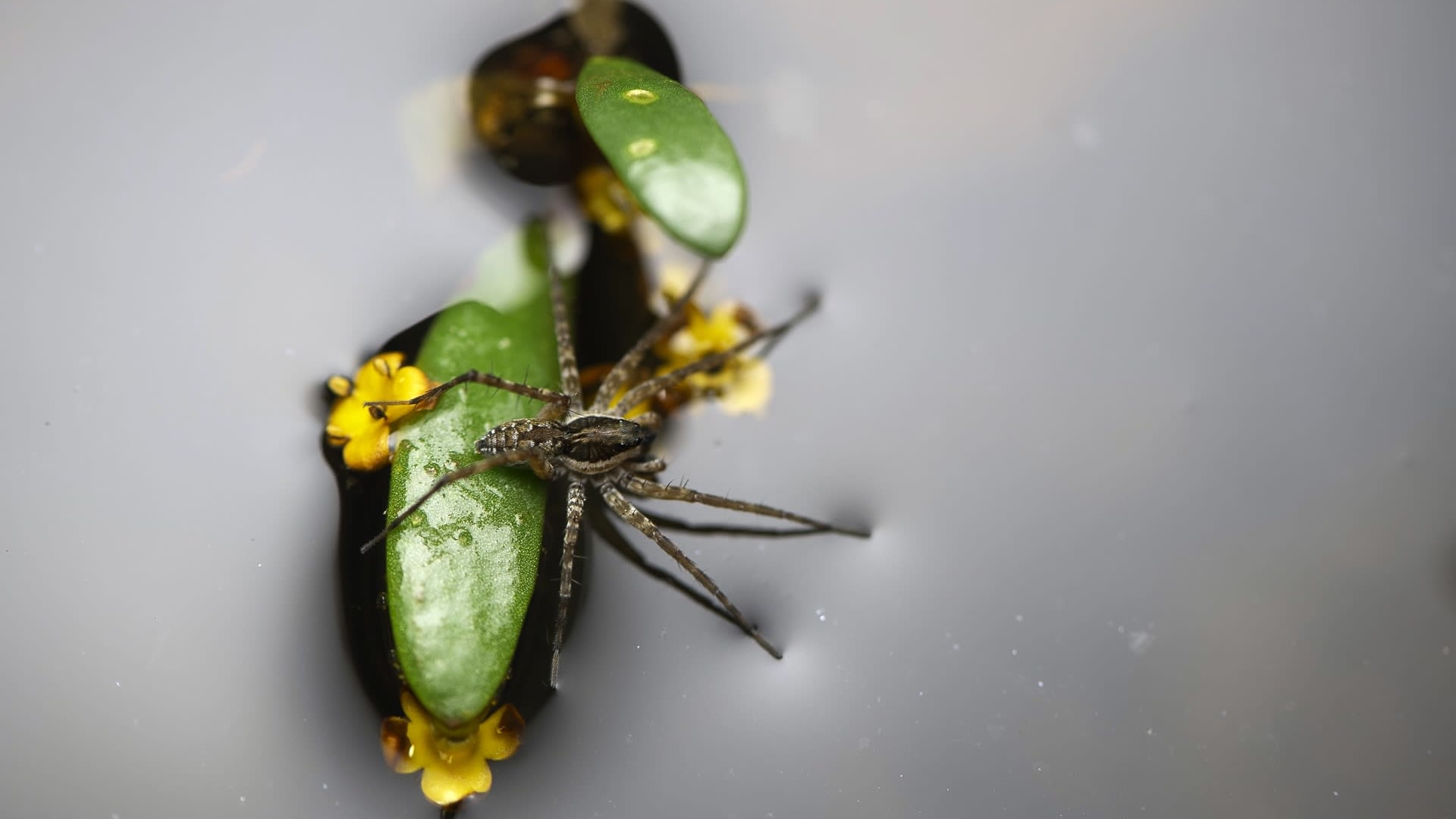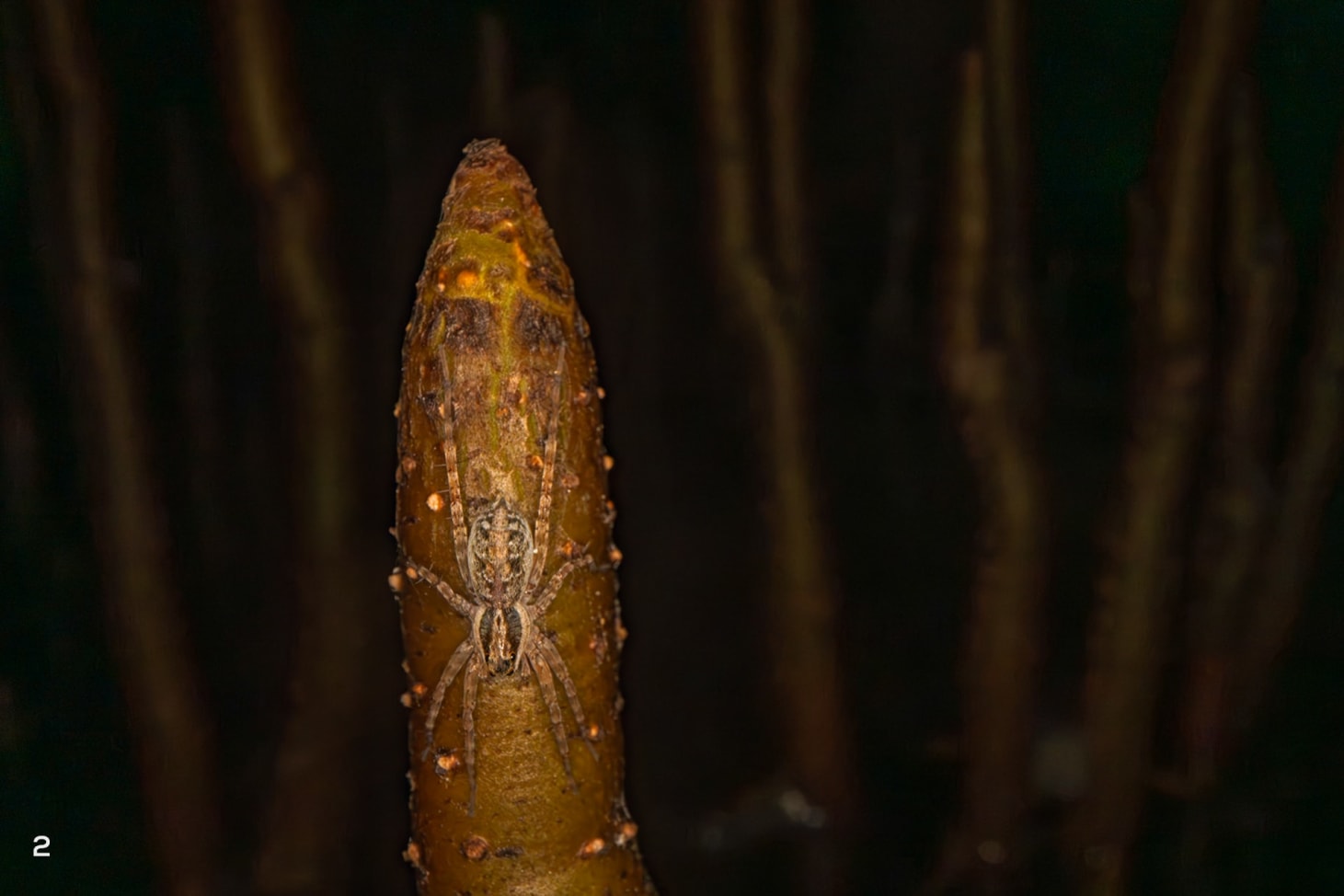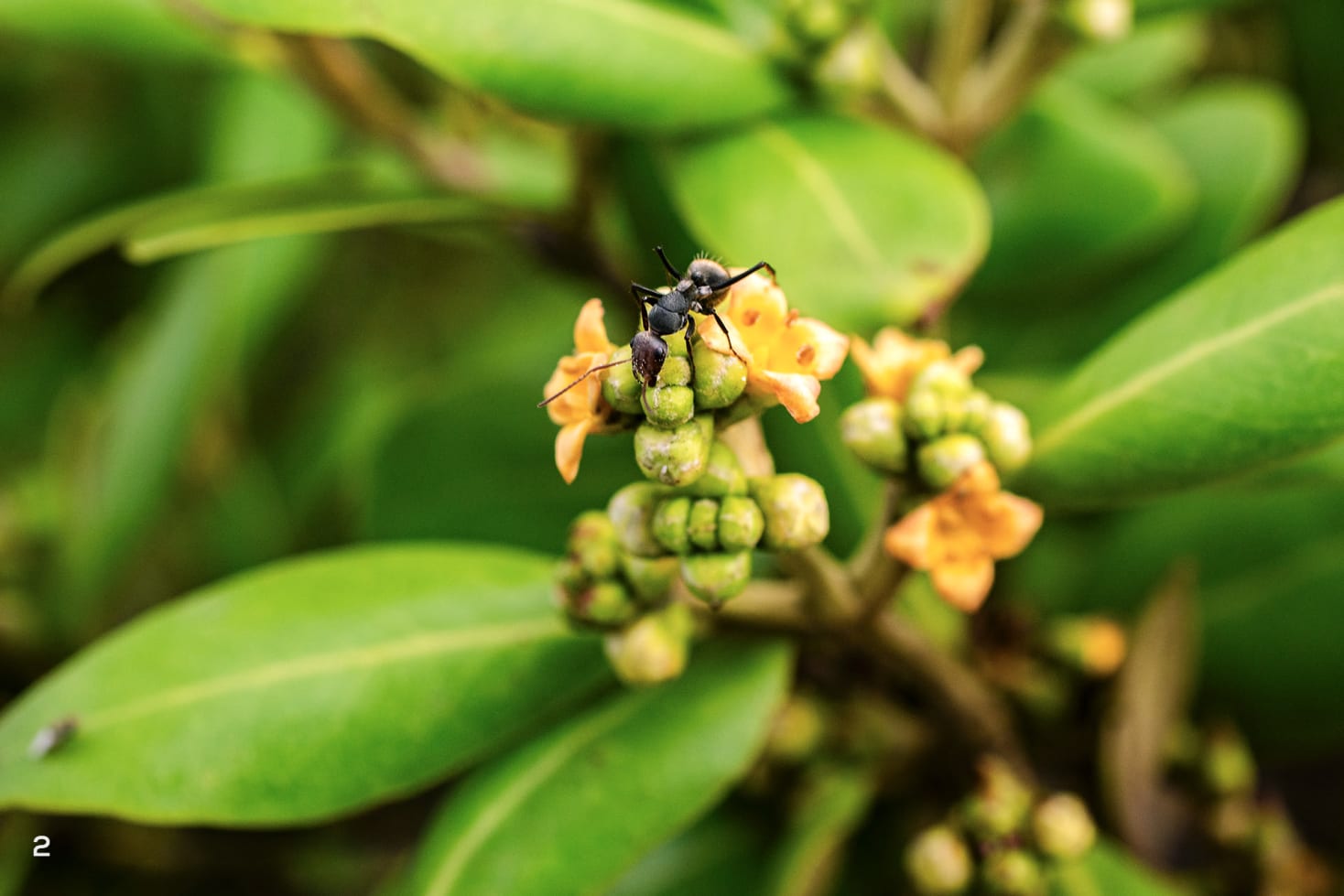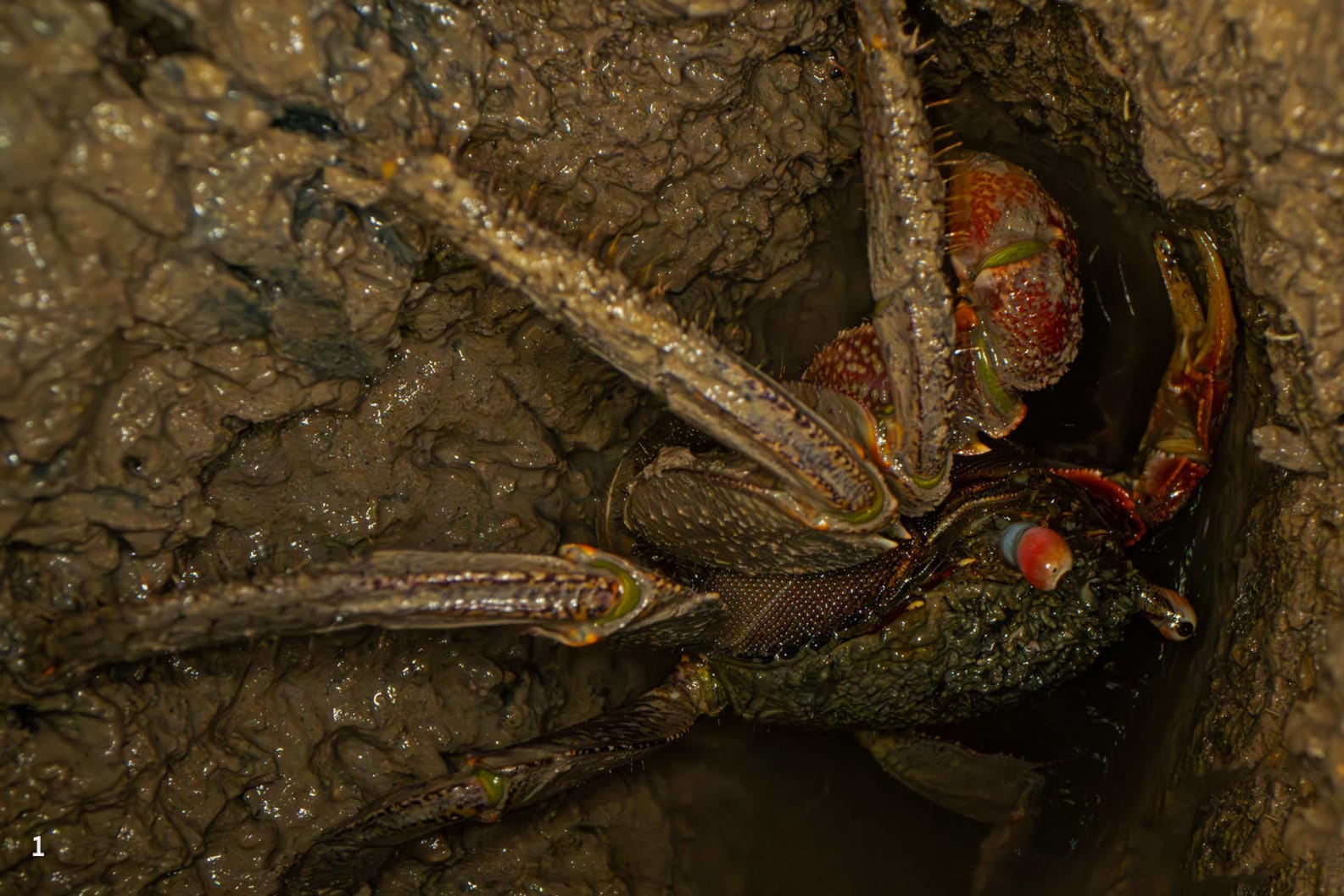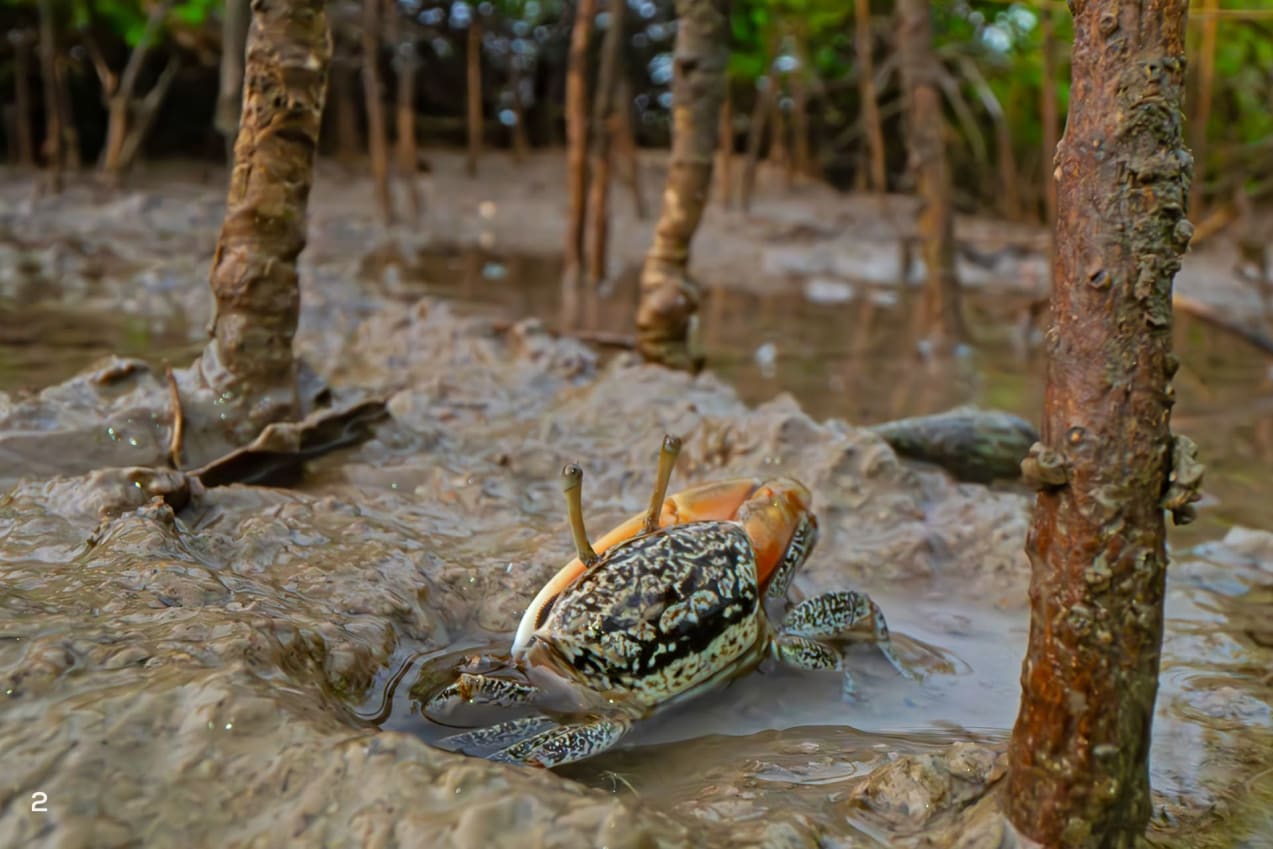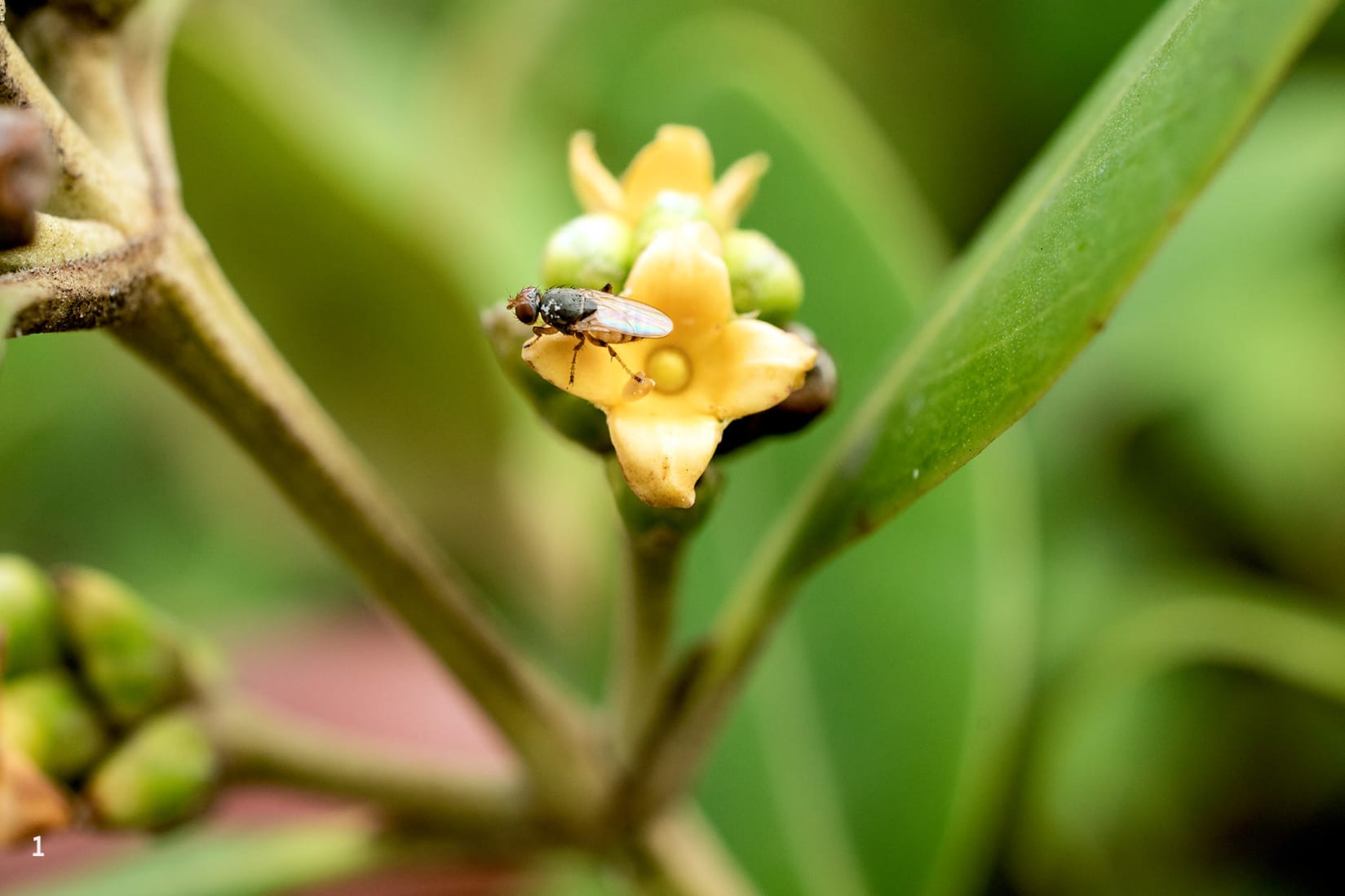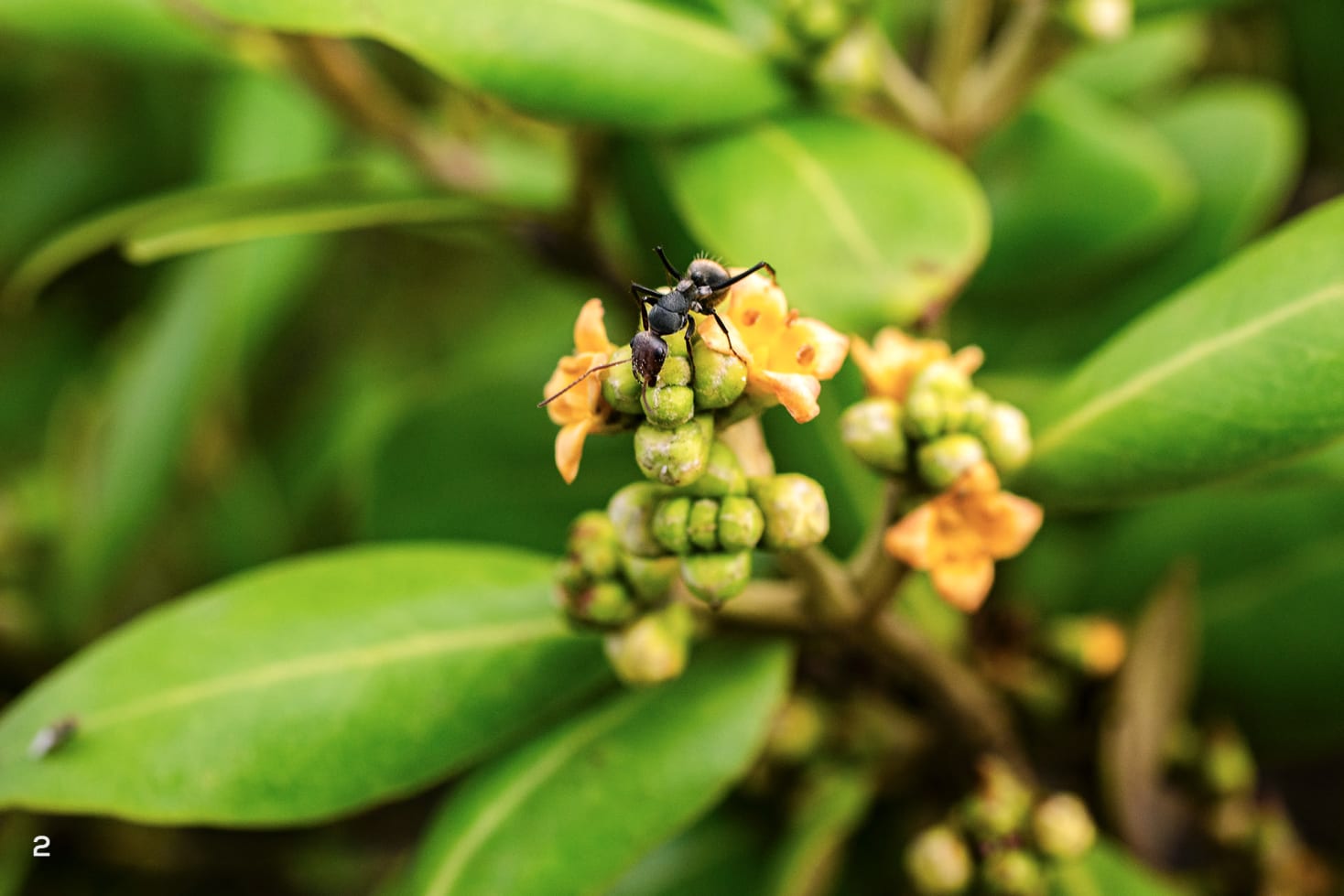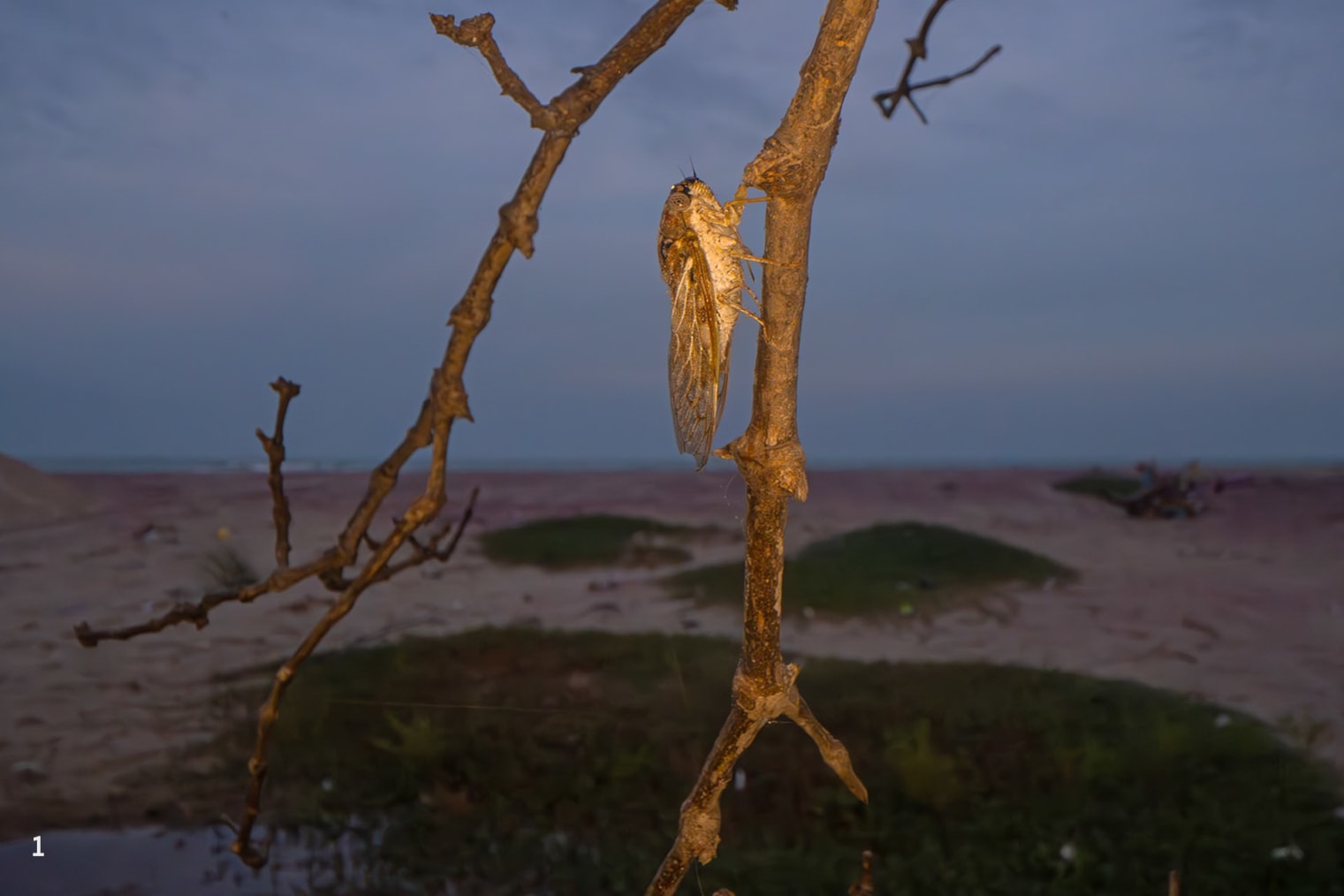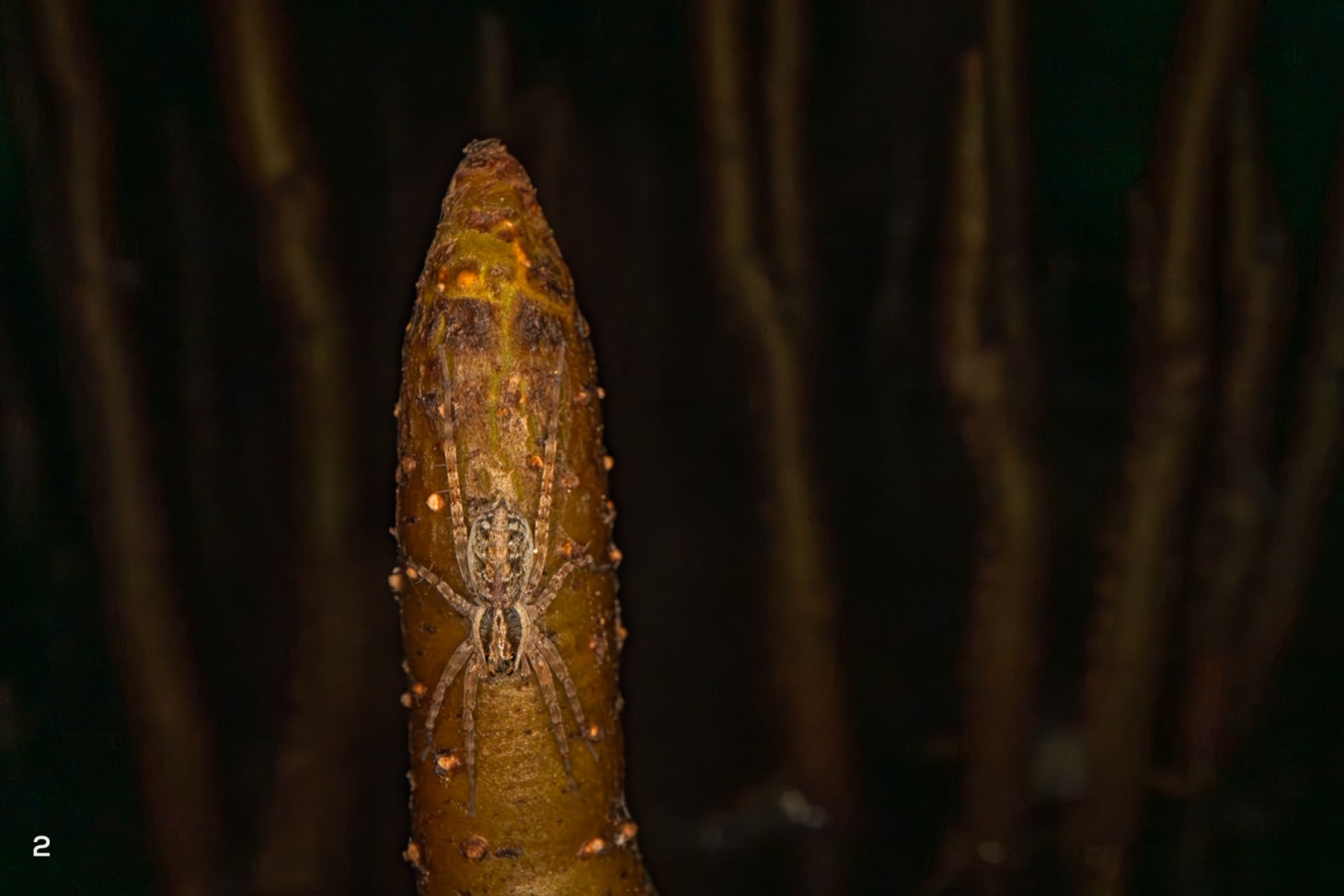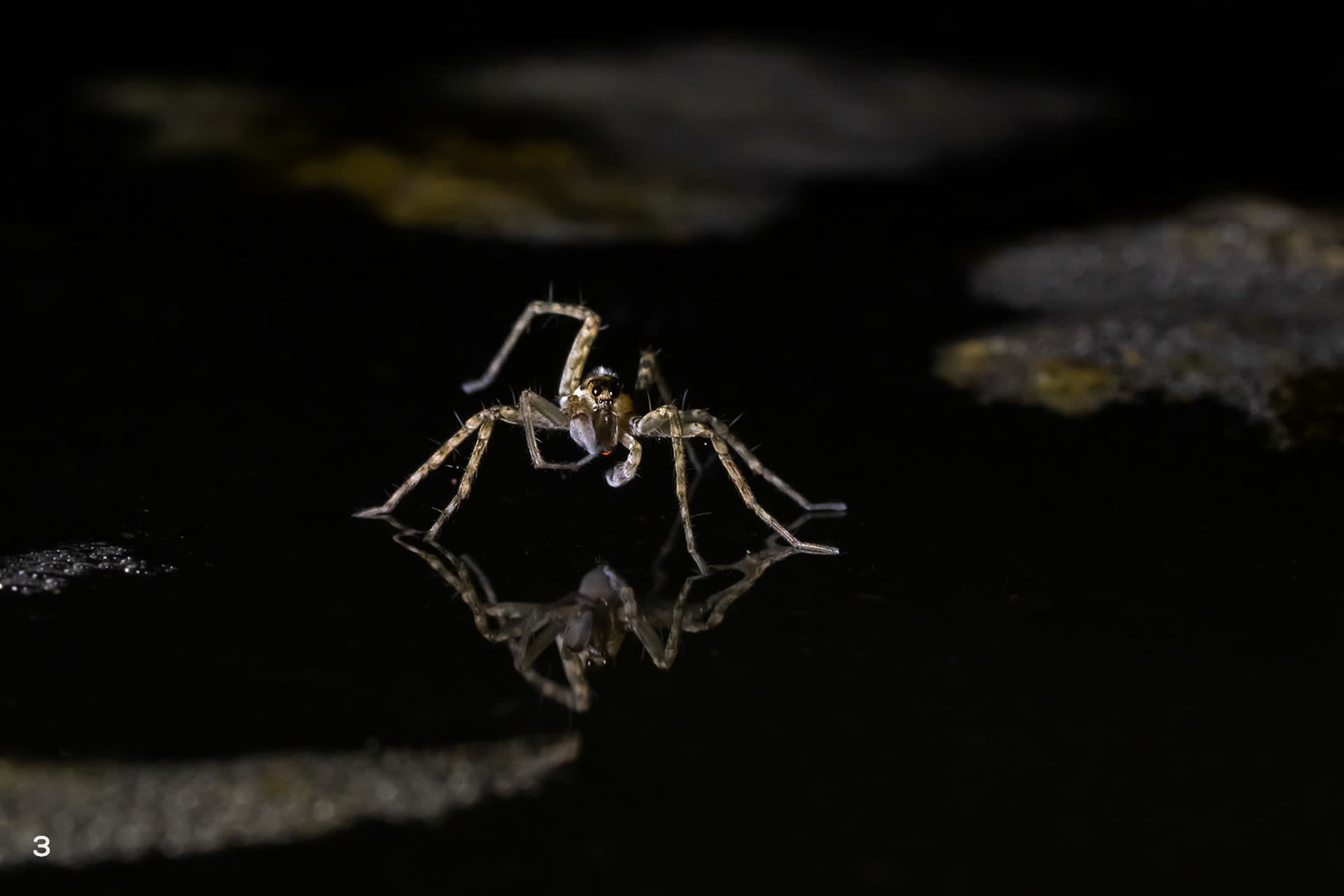 Listen to this article
•
15:34 min
Listen to this article
•
15:34 min
Mangrove forests are bustling, biodiverse habitats. The famous tigers of the Sundarbans, the saltwater crocodiles of the Andaman Islands, and a long list of other creatures inhabit mangroves around India. What about all the smaller residents and visitors of mangroves? I have watched mudskippers living up to their name on the squelchy mudflats around mangroves. I have had the pleasure of watching male fiddler crabs use tai-chi-like movements with their one enlarged claw to warn the competition. In the semi-aquatic world of mangroves, I have mostly looked for birds, reptiles, and aquatic life. Unfortunately, I missed all the minuscule happenings between the branches, leaves, and flowers of individual plants. It was on the shores of the Gulf of Mannar, in a tiny village called Vaippar in Tamil Nadu, that I slowed down and spent many mornings and nights in the company of an intimate group of three mangrove trees. I got to witness flowers bloom, insects come in search of sugary nectar, and tiny predators employ better strategies than I did in my corporate career, to chase down targets — on the branches and leaves of trees and in the saltwater pools around their roots. Each individual mangrove tree, and the smaller spaces within, present a unique set of conditions that support life on a microscale, making them excellent microhabitats.



Cover image: The mangrove-filled waters around Vaippar are full of life. Inside the mangrove pools, fish, shrimp and snails roam underwater through algae tangles. On the surface of the water, between fallen leaves and emergent pneumatophores, wolf spiders walk on the water in search of a meal. Photo: Samuel John
Scented seaside windbreaks
As I stomped through the marshes each day, the heady smell of hydrogen sulphide that my feet unlocked from the soil featured as a fleeting whiff in the strong shoreside winds. How do tiny insects contend with winds that steadily blow at 25-40 knots? When I walked right up to the thick and bushy Avicennia, the speed of the wind was broken by clusters of branches and leaves. They were softening the force of the wind — not unlike the role played by collectives of mangroves absorbing the force of surging coastal waves. The slow-moving breeze around the Avicennia was filled with the fragrance of its small yellow flowers that had attracted a smorgasbord of small insects. The air was busy with bees and flies moving between flowers, drinking nectar and delivering pollen from one flower to another. In addition to the flying insects, trails of ants also came to the flowers for nectar. The ants that came to these mangrove trees would need to wait until low tide to cross back to their colonies in the ground several metres away. On the network of branches, jumping spiders moved stealthily until they were within reach of a bee or fly engrossed in a sugary drink. Deeper within the network, I saw glimpses of three-dimensional webs built by comb-footed spiders that had caught ants that may have fallen from a branch above.
If the fragrance of flowers and heady smells of the soil were a prominent sensory feature of the mangroves during the day, sound took centre stage at dusk. With the fading light, a rhythmic cacophony would start from the mangroves. From only a few feet, and at times, a few inches away, cicadas would drum their tymbals until I could barely hear my own thoughts. Eventually, darkness engulfed the mangroves and with it, the cicadas gradually fell silent. Suddenly, the air was filled only with the whooshing white noise of strong winds.
Saltpans surround the shores of Vaippar in every landward direction. As a result, there is very little artificial light on these shores at night. With only the dim light of a headtorch and windy silence, I was forced to hyperfocus on even smaller sections of the tree. Everywhere I shone my light, I saw spiders. Web-building spiders sat on webs that stretched like sails in the wind, while wolf spider eyeshine was scattered generously all over the ground and the surface of the water.
Branching scaffolds for eight-legged engineers.
Up in the branches of the trees, orb-weaving spiders (Araneidae) had set up their two-dimensional spiralling masterpieces. Even with the shelter of the tree, the wind hitting these webs was powerful. Like a sieve held in the air, the webs caught flying insects that were at the mercy of the wind. Long-jawed orb-weaver spiders (Tetragnathidae) had engineered orb webs using pneumatophores for structural support. The webs were barely 6-8 cm above the surface of the water. Each web was decorated with several flies who were arguably less excited about the spider web than I was. Wondering if it was my light that brought flies that may otherwise not have ventured this far into the mangrove, I explored the vicinity with a dim red light. I found that thousands of tiny flies appeared to be feeding on the detritus (decomposing leaves and other organic matter) washing up on the edges of the mangrove pools.
Aquatic metropolises
At high tide, the pools of water at the base of the mangroves became miniature aquatic metropolises. More snails than I could count moved slowly along the bottom of the pool, grazing the thick carpet of algae. Hermit crabs drew complex lines in the inundated sand as they moved with the snails to eat algae and detritus. Shrimp mixed running with buoyant leaps, like characters in a Matrix movie. Schools of juvenile fish flitted around like particles in the water; the collective would suddenly compress into narrow streams of fish when they passed through narrow gaps between the columns of pencil roots. On the surface of these pools, I noticed something shimmering with a distinct diamond-like quality. When my eyes finally focused on it, my jaw almost dropped to the sand. There were wolf spiders (Lycosidae) walking on water.
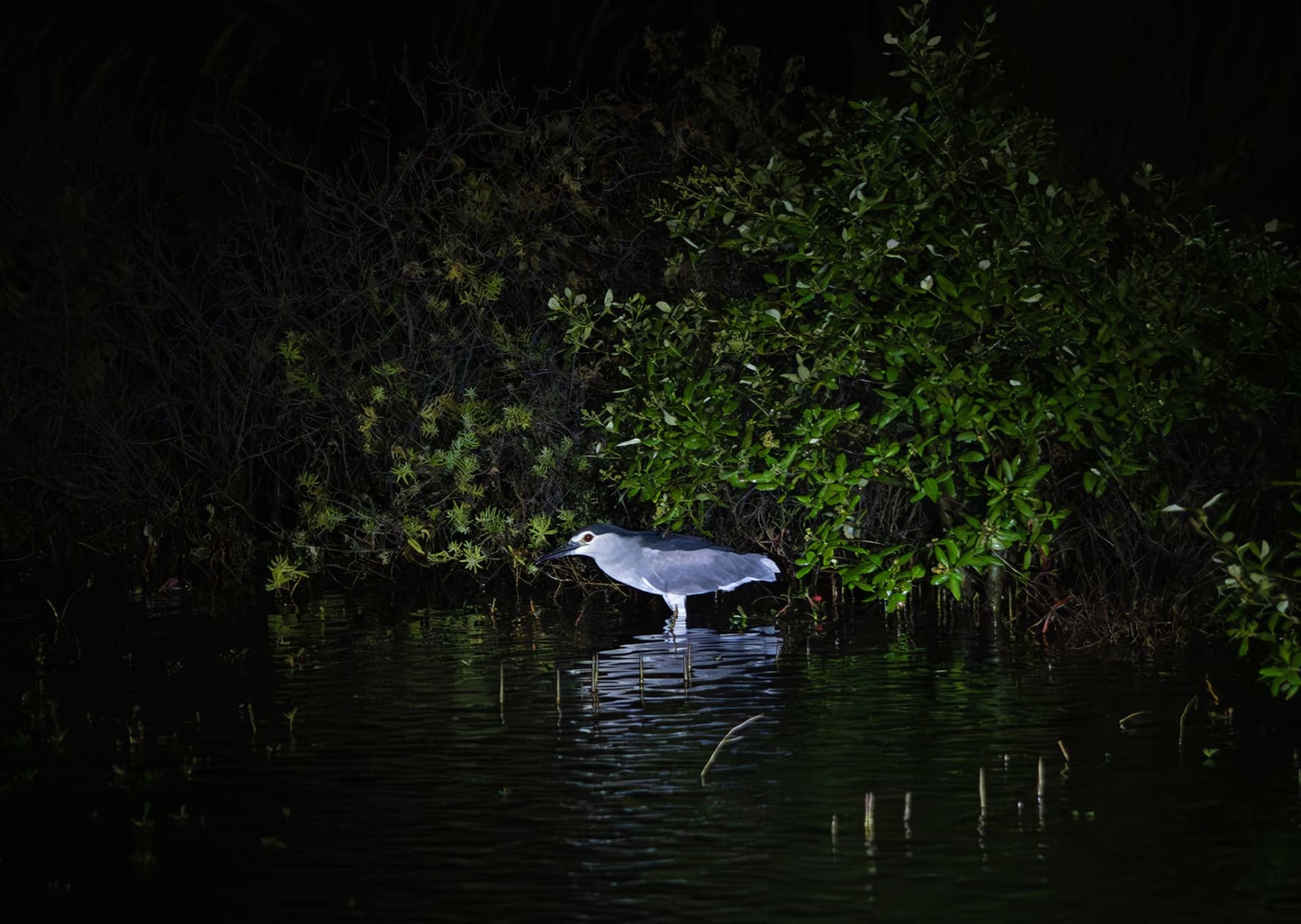
I saw only a few of the thousands of wolf spiders that inhabit this shoreline, casually leveraging surface tension and walking on water. Some commuted across the entire breadth of the pool, some went from land to perch on a pneumatophore (pointy aerial root) in the middle of the water, and a few hovered around in the middle of the water. Most of the wolf spiders sitting on pneumatophores sat with two front limbs in the water, seemingly feeling for vibrations caused by fish or insects on the water’s surface; this is the same hunting position used by fishing spiders such as Dolomedes. It was astounding to see how comfortable the spiders looked on the surface of the water. In one instance, two males competing for a female’s attention aggressively displayed at each other on a pneumatophore. The uninterested female walked away (on water). A female carrying an egg sac came across a male with swollen pedipalps (filled with sperm) and took a detour running on water for three metres before settling on a piece of ocean trash next to my foot. Seeing marine snails, shipworms, and two wolf spiders with egg sacs on ocean trash washed up in a mangrove swamp is one of the most astonishing things I have ever seen.
Microhabitats have a penchant for presenting ecological interactions in the strangest yet most wonderful ways. Every square foot of those three mangrove trees in Vaippar was a visually striking ecosystem in motion. Producers (the mangroves) had adapted to oxygen-poor soil with snorkel roots, herbivores (like beetles) and nectivores (like bees) expertly navigated the wind to get their food, predators (like spiders) used wind and water to their advantage, and detritivores (such as flies) broke down organic matter to ensure this cycle continues. All compacted into spaces that simultaneously belong to the land and the sea.



